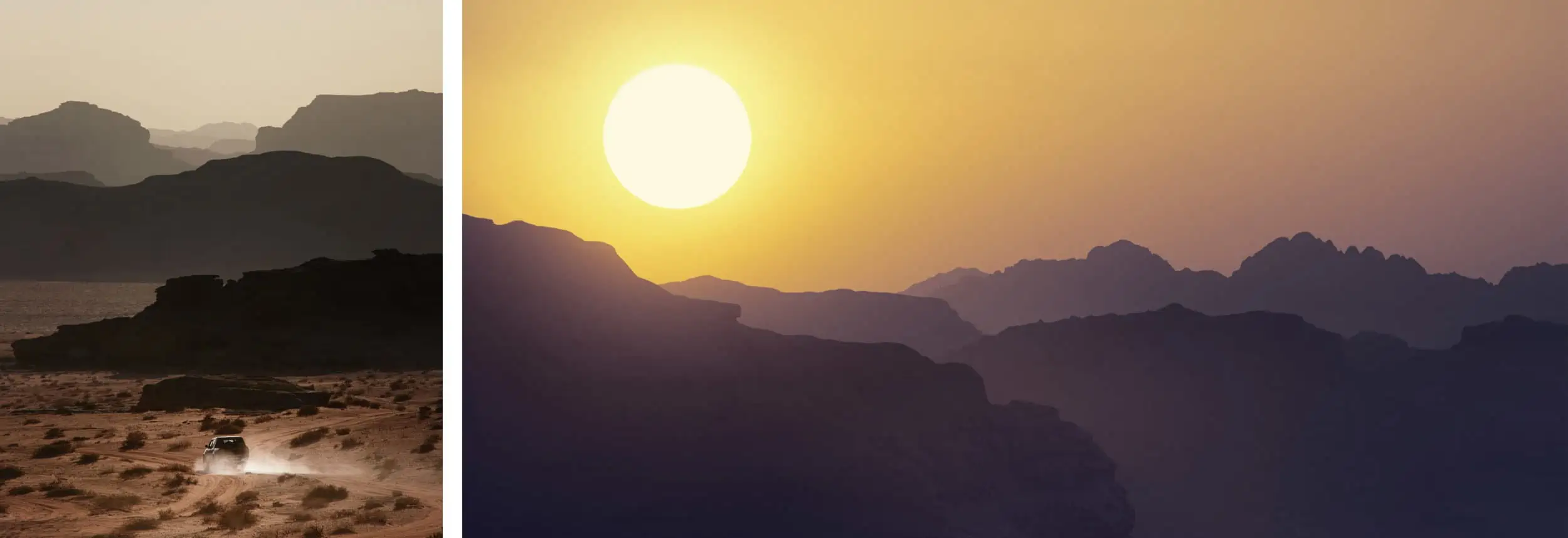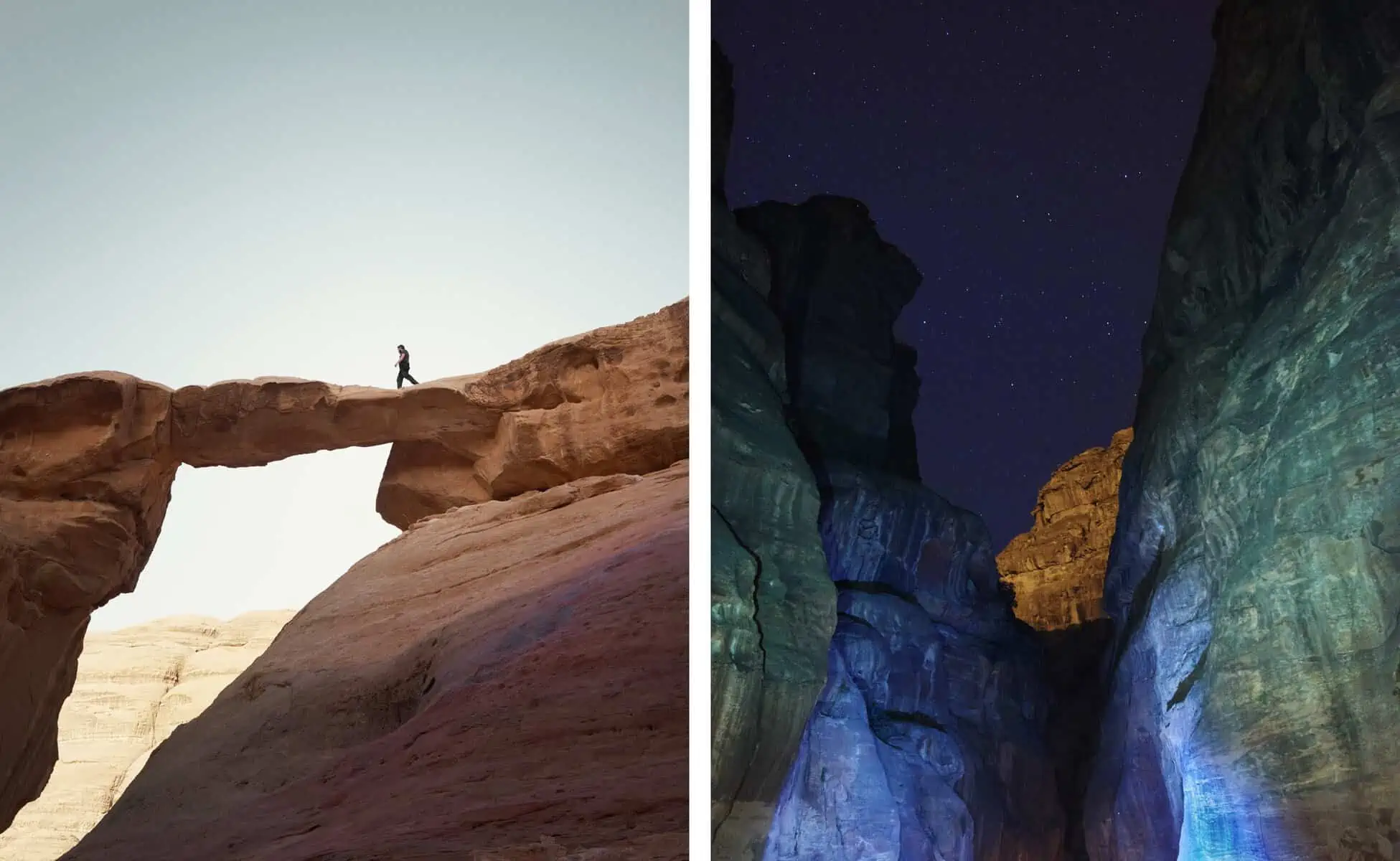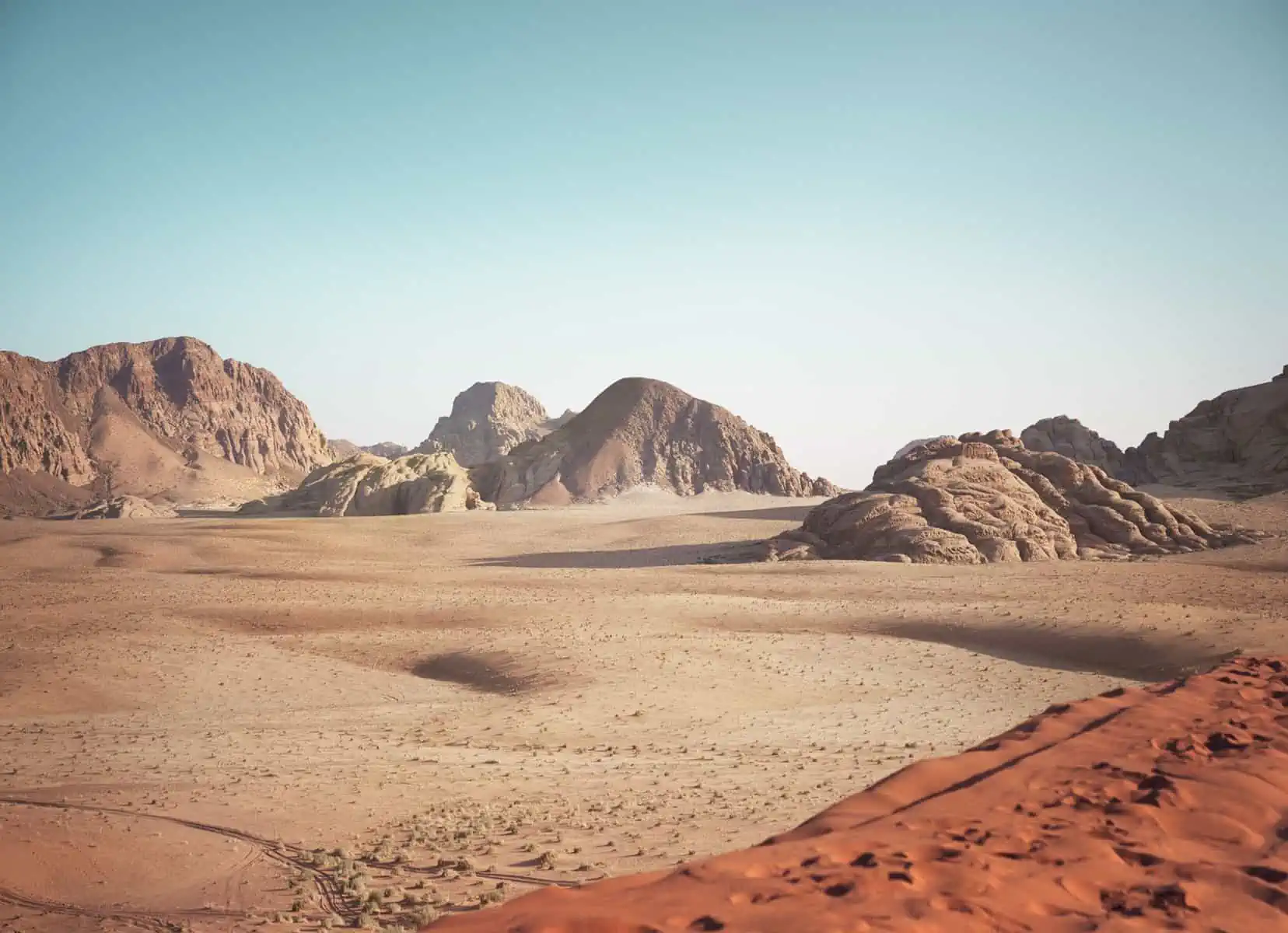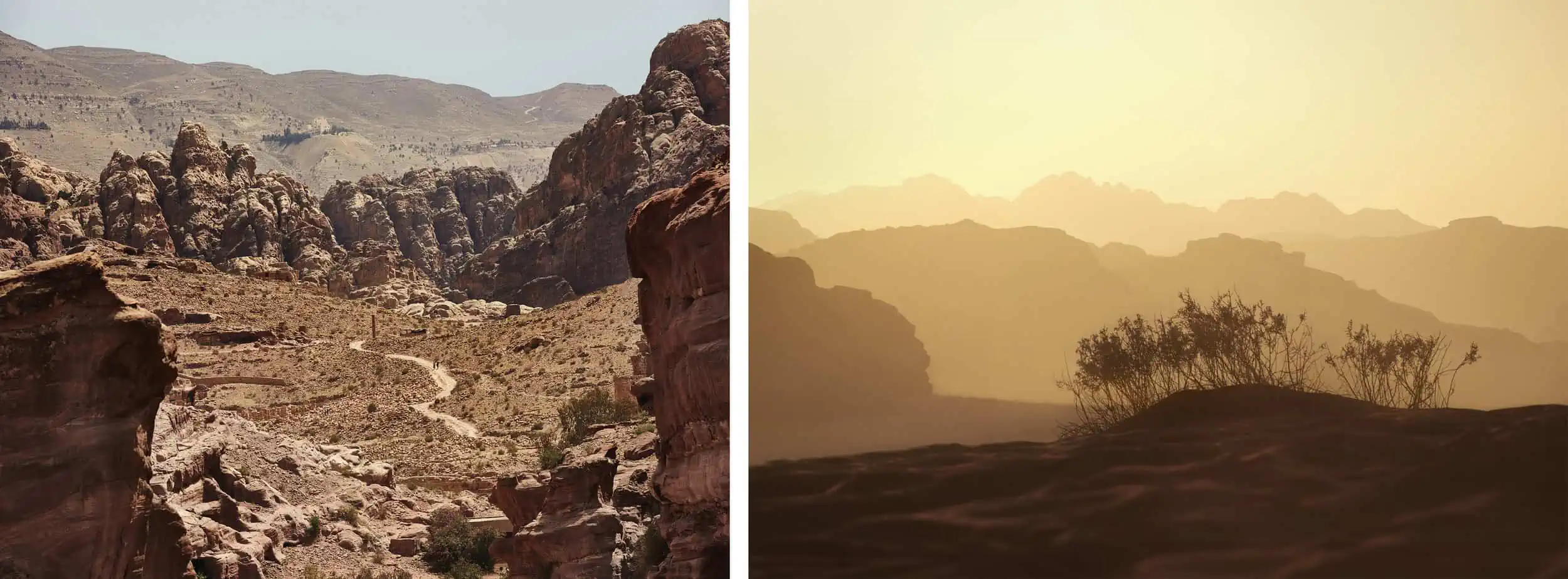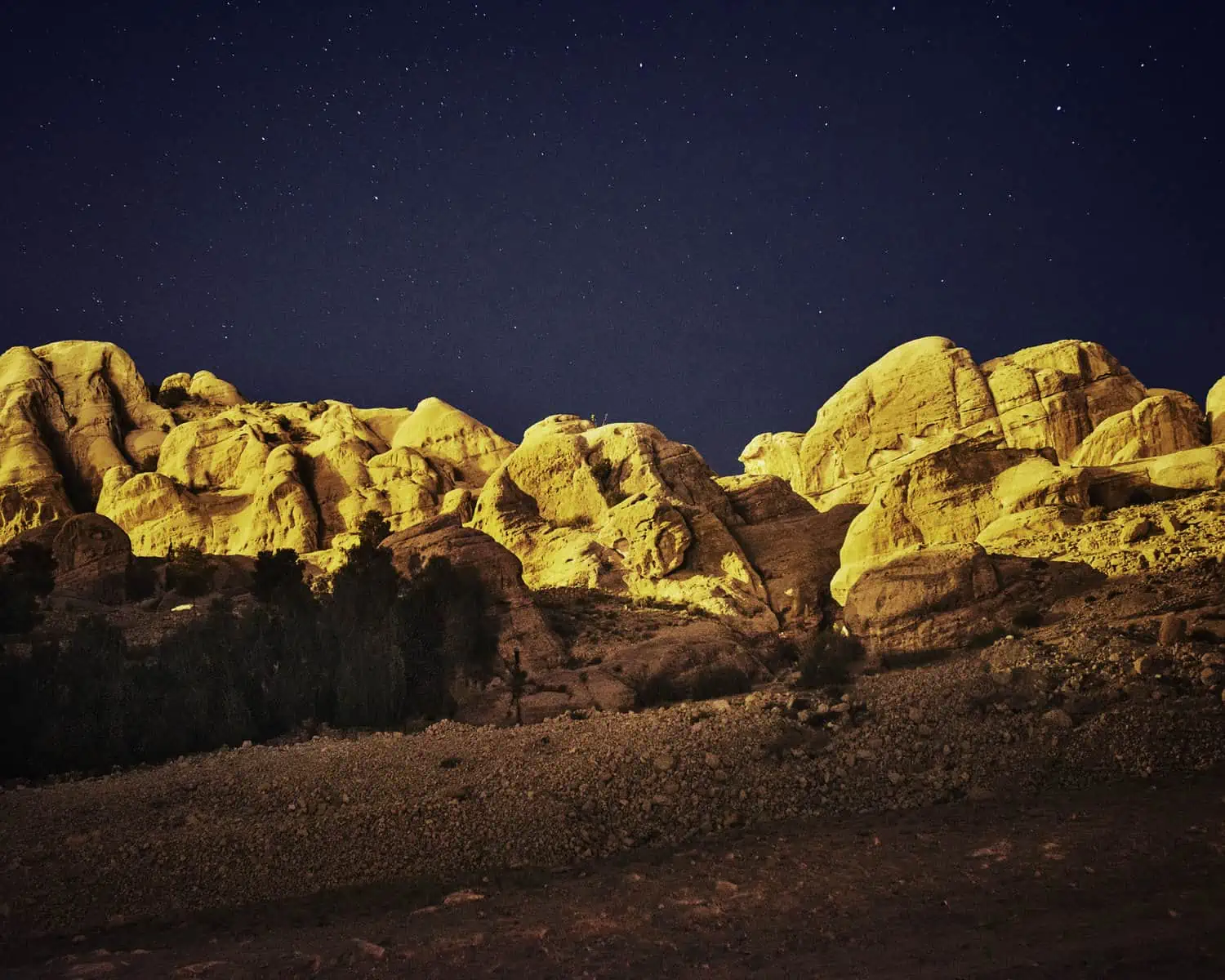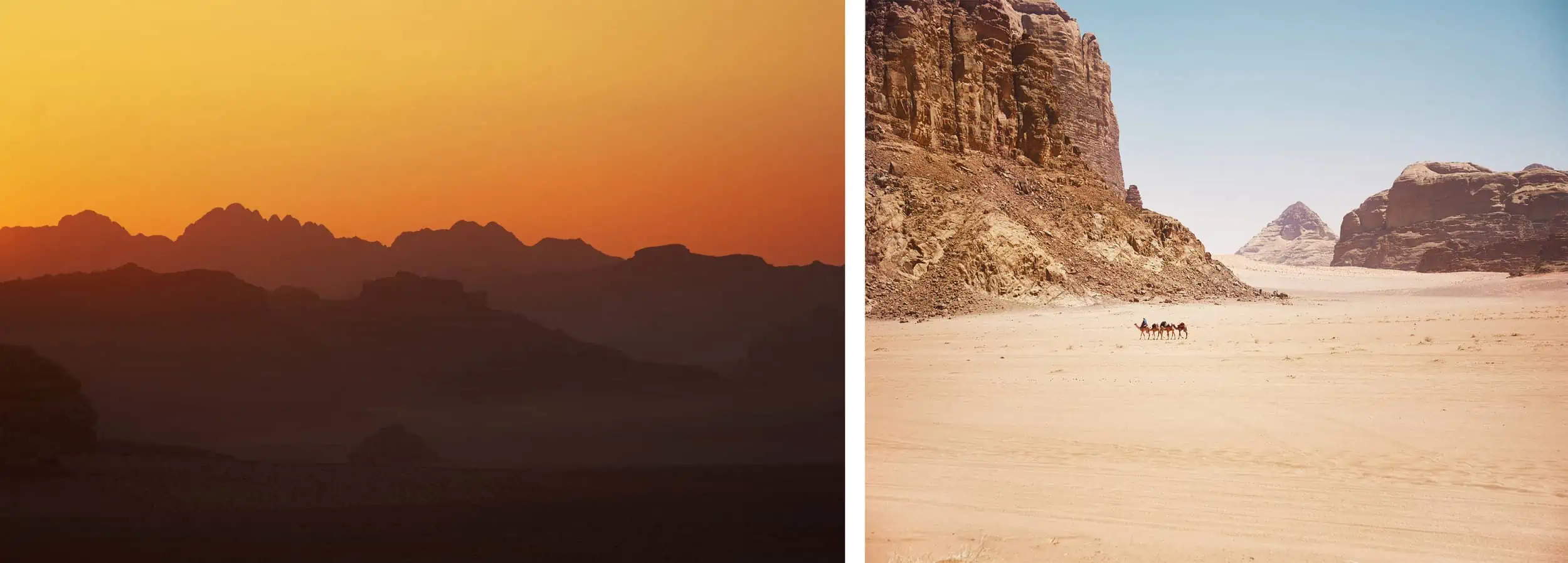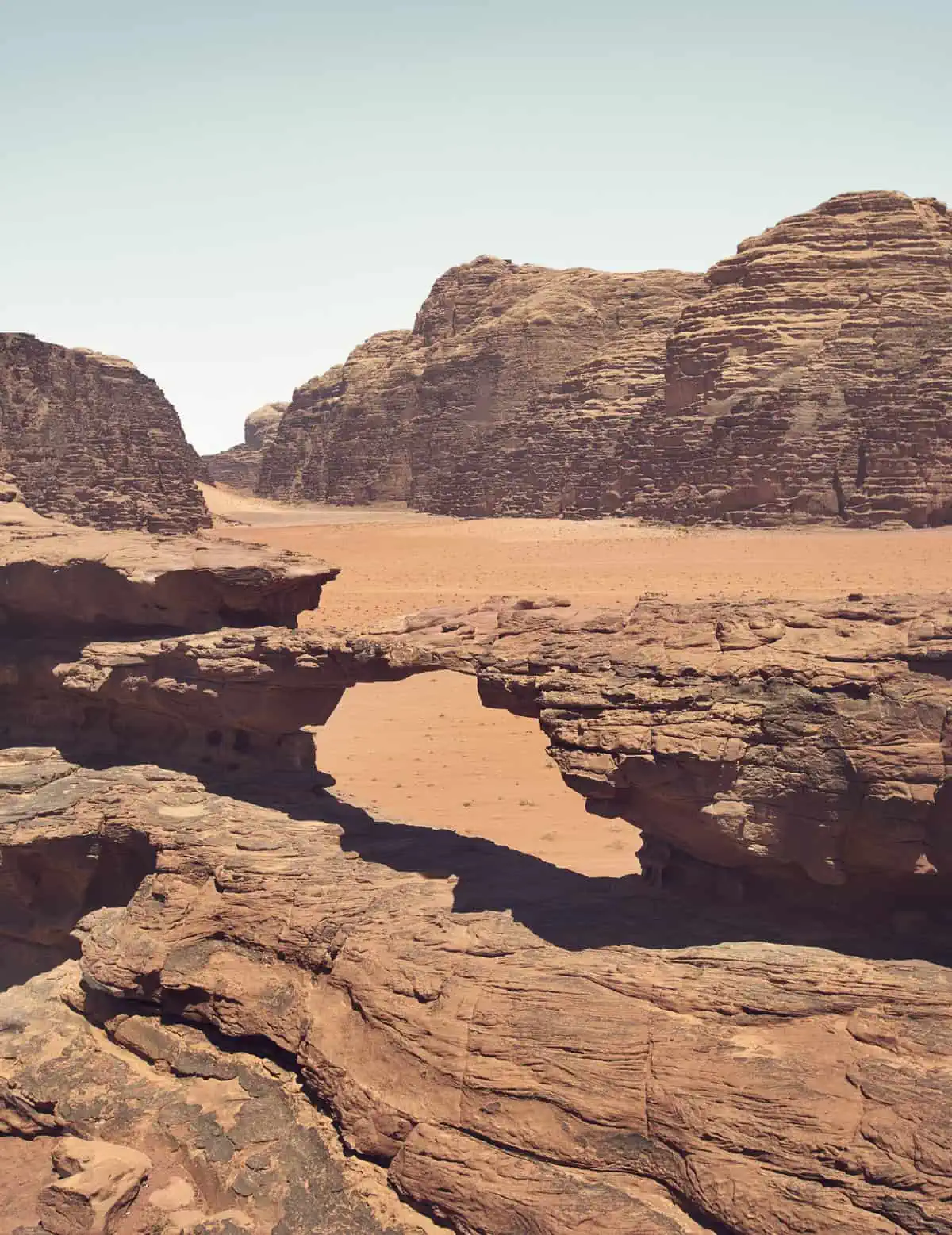A few of our trips have started with a lust to go somewhere but no idea where. We’ve spent many an evening devouring all Google Maps can tell us and street viewing as many possible adventure locations as we can find. When we decided to head off to Jordan, we found that the vast majority of people we told either didn’t know where it was or were a little confused by why we would want to. The truth is, Jordan maybe isn’t your first thought for a trip, but the more we looked into what was available to us on the hiking and adventure front, we started to get very excited. The more we looked, we found landscapes that looked alien, protected gorges, vast mountain landscapes and other worldly desert cities draped in history. If you’re looking for something a bit different for your next trip, there are a whole range of possibilities in Jordan. Below, we’ve included our guide for making the best out of Jordan, what to see and do, where to hike, when to go and an itinerary for a road trip taking in Amman all the way down to Aqaba.
Jordan Travel Basics
Country: Jordan
Getting there: The best place to fly to is Amman, the country’s capital city.
Currency: Jordanian Dinar
Language Spoken: Arabic – but English is widely spoken too
When to go: March to May or September and October are the best times to visit without wildly high temperatures.
Things to note
- A Visa is required for entry into Jordan, but this can be obtained upon arrival at the airport.The Visa fee is also waived if you purchase a Jordan Pass (see below)
- Travel vaccinations may be required. You should, if possible, see your doctor or private travel clinic at least 8 weeks before you’re due to travel. They will be able to advise you based on your travel plans, which vaccinations you’ll need
- Medical facilities outside Amman are basic, if you are in need of emergency medical treatment, it is best to seek treatment in Amman. Emergency treatment can also be obtained in Aqaba
- One of the most common questions asked about Jordan – especially when you see that it shares a border with Iraq and Syria is ‘is It safe to visit?’ The answer here is yes, and Jordan really needs more tourism. It is also entirely possible to travel alone
- Female travelers should take note that whilst it is not a requirement by law of visitors, it is advised to cover arms and legs where possible and to carry a headscarf. Fay found that in Amman, she felt comfortable without a scarf, but when we were driving through and visiting other, more rural areas, it felt more appropriate to have a headscarf
- We could not find detailed topographic maps for Jordan.Worse still, the topographic features on the map we did have were substantially inaccurate.If you intend to do any sort of off-trail hiking, we strongly recommend you hire a local guide unless you have substantial experience
- The Jordan Pass can be purchased online in advance from here which and allows free or reduced priced entry to a number of attractions, including Petra. If purchase din advance, the Jordan Pass also allows you get your entry Visa free of charge.It is well worth the cost and would strongly advise any visitor to pick one up
Itinerary
Day 1 – Arrive in Amman
After you’ve picked up your car from the airport, relax in one of the hotels in the city. Depending on what time you arrived and how jet lagged you are, we’d really recommend taking a look around this bustling city. It can feel quite overwhelming at first, but its vibrancy is charming. If you arrived late, or you are tired, you might want to take the next day to enjoy the city before heading off. If this is the case, just add in another day to the itinerary here.
Day 2 – Drive to Mujib Nature Reserve
For this part of the trip, you’ll be basing yourself in nearby Madaba
Situated roughly half way down the Dead Sea, the Mujib Nature Reserve presents a unique landscape of narrow slot canyons (or as they are called in Jordan, Sics) all of which drain down into the Dead Sea – the lowest point on earth. The reserve is an important wildlife sanctuary and much of it is not easily accessible. However, there are some long-distance hiking trails that cut through, but these are not recommended unless you have some experience with difficult terrain and desert conditions. From our own research before the trip, we found that it was not uncommon that some of the canyon trails require abseiling and rope work.
One of the things we found difficult about planning our Jordan trip was local information – however, it is possible with some research to be able to hire a guide to get into these areas. In complete honesty, this is not something for this particular trip that we investigated in a great deal of detail, so would feel uneasy commenting on this further. However, one trail that is accessible to the less experienced hiker is referred to as the Sic Trail. ‘Accessible’ here is a relative term because the trail does involve wading through deep water, sometimes more than chest deep. The entrance price includes wet suit hire, and it is not recommended to take a camera without a waterproof housing or any expensive electronic equipment on the trail with you. All that said, if the conditions are right, this trail can be a lot of fun, and a great adventure. The start of the trail is located a very short walk from the Mujib visitors center on the shores of the Dead Sea.
As the Dead Sea is the lowest point on earth, it is particularly prone to flooding, and flood conditions can exist even if there has been no rain in the area. The staff in the visitor center will be able to advise you on if the trail is safe.
Related content: Best Things to do in Tunisia – Your Ultimate Bucket List
Day 3 – The Dead Sea and Mount Nebo
For this part of the trip, you’ll be basing yourself in nearby Madaba
Once you’ve woken up in the bustling city of Madaba, you’ll be ready to head out for the day to take in Mount Nebo and the Dead Sea. From Madaba, Mount Nebo is a short drive. This site has enormous religious significance and you’ll likely run into many groups of pilgrims there. The site houses some fine Byzantine mosaics and gives an incredible view over the surrounding lands. We spent just over an hour there, after which, we drove on to The Dead Sea – a short distance away.
The Dead Sea is surely one of the most incredible natural sights in the world. It is a landscape genuinely unlike any other. What struck us most about it was just how dynamic this seemingly ‘dead’ landscape actually was. The salt formations on the shoreline, and even the shoreline itself are in a constant state of growth, decay and flux.
To the North of the Dead Sea (nearest Amman), visitors can find a wealth of hotels offering all manner of spa treatments using Dead Sea mud. However, as you head South, these soon give way to an untouched shoreline. The exploration of this is magical and mesmerizing as you take in crusted, salt crystal covered areas. Further South, past the Mujib Nature Reserve, the landscape becomes greener and slightly more agricultural and we would say maybe less spectacular – so the middle section around the Mujib is the best section to explore.
There are no trails as such, however there is plenty of parking by the side of the road, incredible views to take in, and you can easily find your way down to the shore to explore. On you return drive to Madaba, it is worth driving towards the Ma’in Hot Springs – we didn’t visit the hot springs themselves, but this route rapidly gains height over the Dead Sea and gives a spectacular view into Israel. In the evening the light is incredible, making for some beautiful photo opportunities.
Day 4 – Drive to Wadi Musa via The Kings Highway, and then rest day
For this part of the trip, you’ll be basing yourself in nearby Wadi Musa
Wadi Musa is the gateway to Petra, perhaps the single most famous site in Jordan. The drive in takes in an iconic trade route. Wadi Musa itself is a very touristy city, there are plenty of hotels and restaurants, but the key attraction is Petra.
Petra is a desert city built around a network of canyons, many of the buildings are carved directly into the rock. The city has existed since possibly as early as the fifth century BC and though its heyday is long gone, there are still Bedouin people who make their home in the city. The site is huge, and the structures span thousands of years. Byzantine Monasteries rub shoulders with Roman temples, which in turn are overlooked by Arab tombs. There is at least a full day of exploration to be had and if you want to go to some of the more off the beaten path locations, you can spend a number of days exploring.
The main roads and plazas through Petra are very heavily trafficked. Do not expect to have the place to yourself, but the further you venture, the less people you will encounter. Be sure you take some of the side trails up the canyon walls as these reward you with spectacular views of the surrounding desert and city itself. Petra generally closes in the evening, however a limited number of night time tours are run, which can usually be organized through your hotel. From experience, do not worry about missing these, as they are one of the first things that will be mentioned to you when checking in to your hotel! Whilst these are very curated, touristy experiences, they are great because they give a very unique point of view on this already spectacular location. If you do intend to take photos in Petra at night, we would strongly advise bringing a tripod. It gets very dark and even with a high ISO, you’ll find exposures may be too long to hand hold.
Day 5 & 6 – Explore Petra
For this part of the trip, you’ll be basing yourself in nearby Wadi Musa
Day 7 – Drive to Wadi Rum
For this part of the trip, you’ll be basing yourself in the desert of the Wadi Rum
The Wadi Rum desert is like no other, and arguably our favorite experience of the whole trip – we wished we had carved out more time for this portion! As you drive from Wadi Musa to the Wadi Rum, you’ll start to get a taster of what is to come, but it only when you begin a tour that you’ll really start to get overwhelmed by the beauty there is here.
It is worth noting that there are only very small sections of the Wadi Rum that you can explore unguided, and because most of the desert is a protected area, you have to be accompanied by a guide. This was something that bothered us when we were planning our trip, but we soon saw the benefits this has – especially if you organize a private tour with an experienced guide.
We spent quite some time researching guides in the area, and after many conversations, decided to go with a tour guide called Bedouin Directions. What we liked about them was that they were a small team and open to creating custom plans and designing our trip around our wants and needs. The guys at Bedouin Directions have a camp set up in a canyon deep in the desert with simple tents (with comfortable beds and electricity – they even have a shower block) that are overlooked by the stars – a very far cry from some of the more commercialized tours in the area.
What we didn’t realize would play such a big part in this truly unique adventure was just how much the guys made us feel like family. Our guide was able to very quickly work out that our interests were in exploring, and, in some ways, this was the start of us finding our passion for the backcountry. You can organize tours that are fully supported and range from a couple of hours to five days. The Wadi Rum has some fantastic hiking, scrambling and climbing and makes for a truly unforgettable experience. Guides in this area are not expensive, costing just slightly more than your hotel stay will have cost you in Wadi Musa.
Day 8 & 9 – Explore Wadi Rum
Day 10 – Drive back to Amman for your return flight
Drive back to Amman early, and, depending on the time of your return flight, take in the sights and sounds of the city or relax in your hotel before your flight home.

